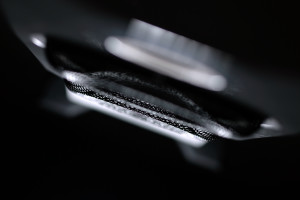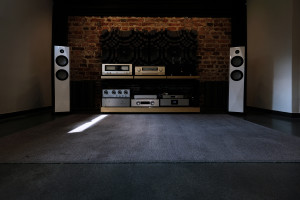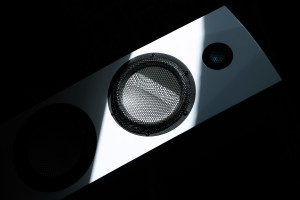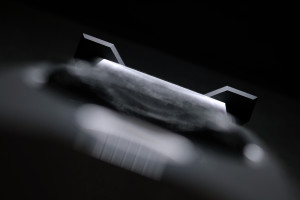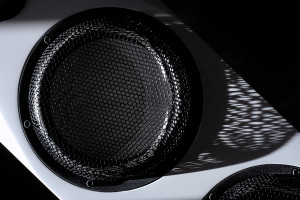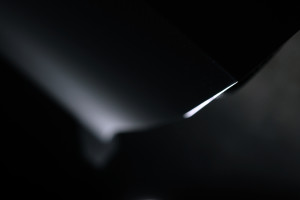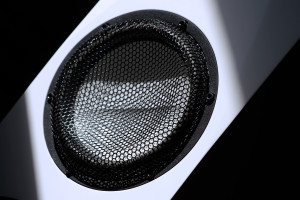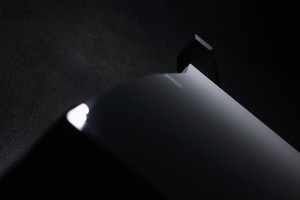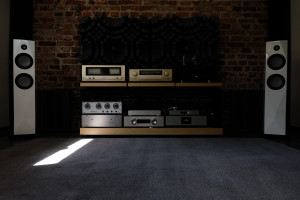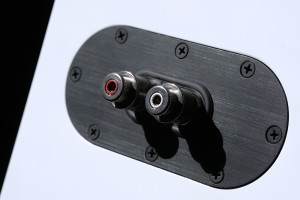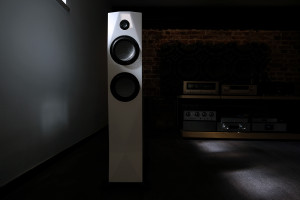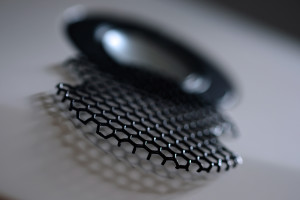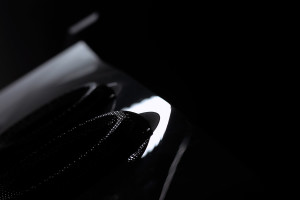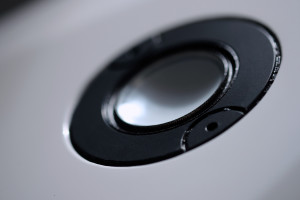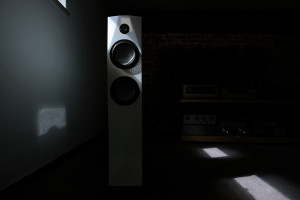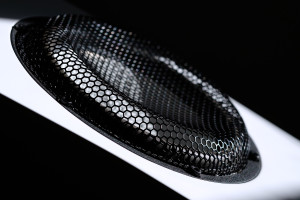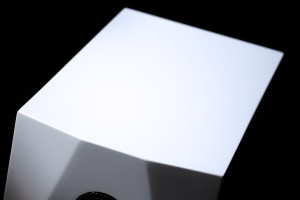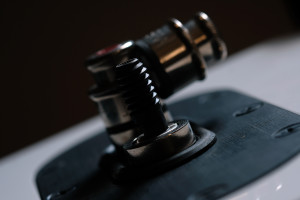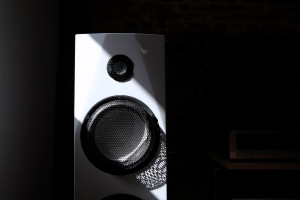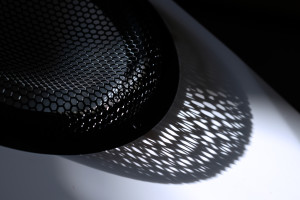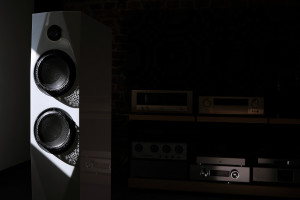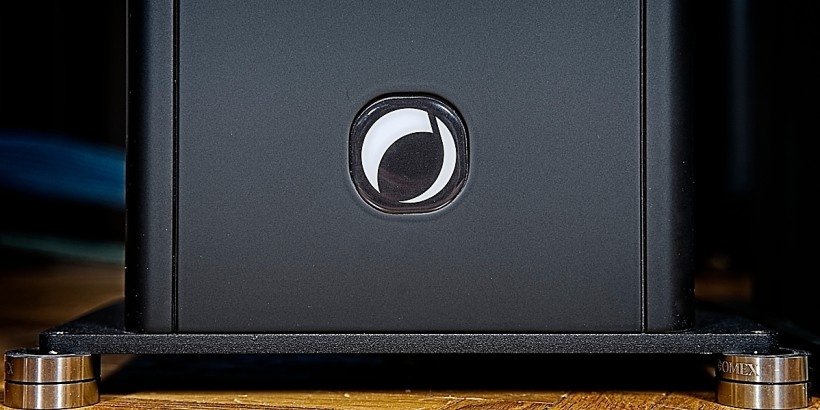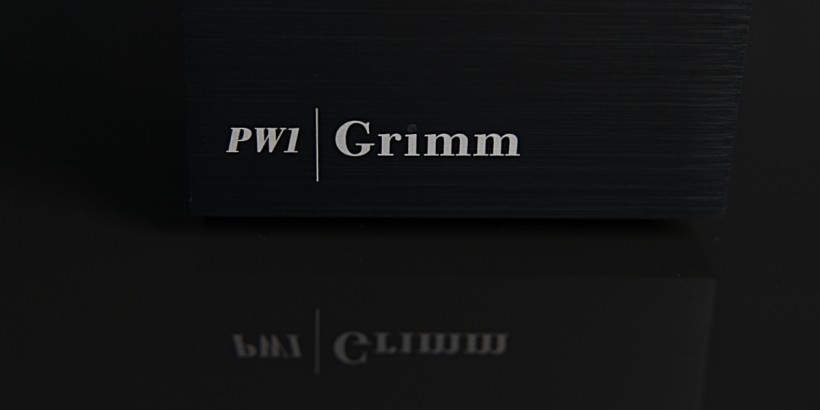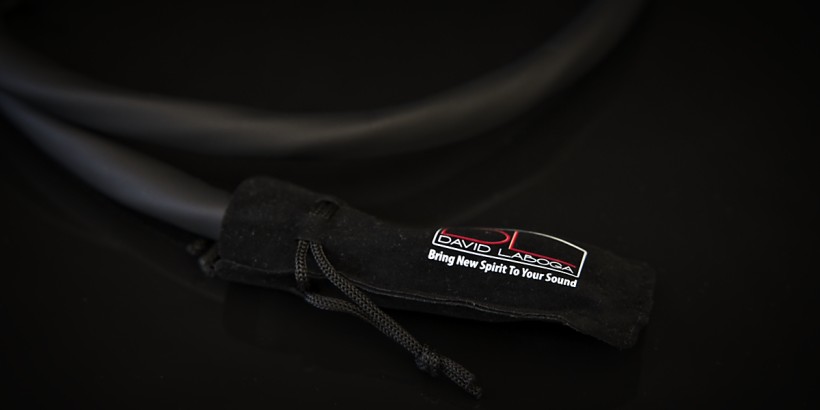The young and ambitious DearWolf team became operational not too long ago. It started with a very serious and costly portfolio opener, which was sent my way several weeks ago. DearWolf Roe Deer is this review’s main dish. Enjoy!
Introduction
To say that Poland is full of successful audio houses is an understatement. Worldwide known operations such as GigaWatt, LampizatOr or J.Sikora come to mind, but the list is far longer. Polish folk do it all; sources, cables, turntables, amps and many more, however for some reason speakers became particularly popular in our country. Today’s story is all about one such a product, but most interestingly this adventure started as a casual hobbyist interaction rather than a typical business case. One local distributor located in Poznań told me about a very young team of passionate audio designers from the same city. I was informed that they already had an ace up their sleeves and weren’t afraid to use it, whereas their deep interest in my work sealed the deal. “By all means, please pass on my number, I look forward to hear from them” is what I said. Today’s company established by two men – Krzysztof Dudek and Jan Przybył – was known as P&D Acoustic for a while to then finally morph into DearWolf. The name itself struck me as both intriguing and positively odd. The explanation that followed involved a clever wordplay associated with this simple yet witty question: “Dear wolf, why won’t you play bass?”. Doesn’t make much sense, does it? Worry not, early on to me it didn’t either, but closer inspection of this review’s product and its drivers connected everything nicely. The predatory animal used in DearWolf’s name pointed at inherently wild and a bit aggressive nature of this brand. The two lads behind it clearly were after blood, which in this context would be a major piece of the audiophile pie. Which newly established audio house wouldn’t like to have some?
Today’s company established by two men – Krzysztof Dudek and Jan Przybył – was known as P&D Acoustic for a while to then finally morph into DearWolf. The name itself struck me as both intriguing and positively odd. The explanation that followed involved a clever wordplay associated with this simple yet witty question: “Dear wolf, why won’t you play bass?”. Doesn’t make much sense, does it? Worry not, early on to me it didn’t either, but closer inspection of this review’s product and its drivers connected everything nicely. The predatory animal used in DearWolf’s name pointed at inherently wild and a bit aggressive nature of this brand. The two lads behind it clearly were after blood, which in this context would be a major piece of the audiophile pie. Which newly established audio house wouldn’t like to have some? During our introductory talk Krzysztof revealed that his and Jan’s major goal was to design a product exclusively based on Accuton’s loom. Truth told, back then I wasn’t interested in today’s item as much as I was eager to find out how the two of them came up with the idea of such a luxuriously priced audio furniture as a business opener, and why was Krzysztof so strongly opinionated about his components selection and many other things. He explained that, along with his business partner, they’ve been visiting audio establishments for years, their own taste developed well and, past auditioning a fair chunk of costly products at local dealerships, the decision was made to try and create something of their own. Then a legal operation as we know it today was set, a visit to Accuton’s factory followed shortly after and many months later the very first product – Roe Deer – finally emerged.
During our introductory talk Krzysztof revealed that his and Jan’s major goal was to design a product exclusively based on Accuton’s loom. Truth told, back then I wasn’t interested in today’s item as much as I was eager to find out how the two of them came up with the idea of such a luxuriously priced audio furniture as a business opener, and why was Krzysztof so strongly opinionated about his components selection and many other things. He explained that, along with his business partner, they’ve been visiting audio establishments for years, their own taste developed well and, past auditioning a fair chunk of costly products at local dealerships, the decision was made to try and create something of their own. Then a legal operation as we know it today was set, a visit to Accuton’s factory followed shortly after and many months later the very first product – Roe Deer – finally emerged.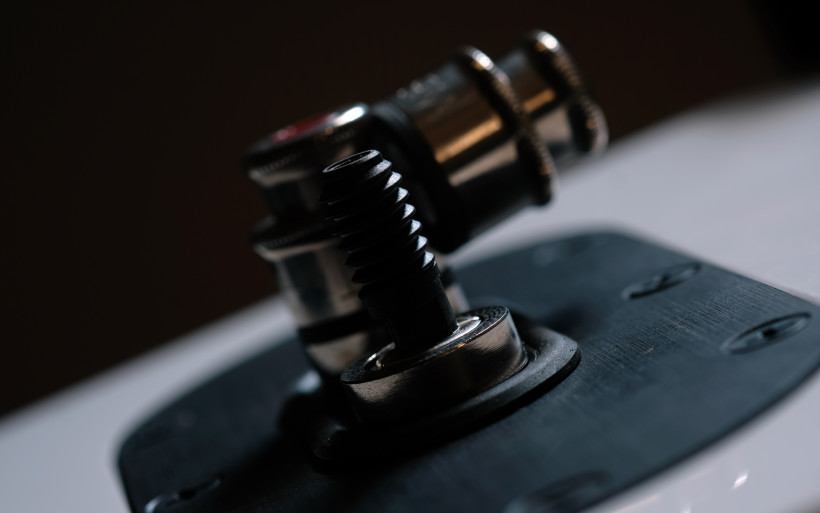 In spite of being in his early twenties, Krzysztof surely knew his onions. There was no marketing fluff involved, on the contrary to prompt answers to all questions yours truly had. “Good, an ambitious and straightforward chap!” – I thought to myself. One never knows what to expect of such fearless people. What I do know however is that they tend to think outside the box and walk their own walk, which of course doesn’t have to but surely can lead to surprising results. At this point the DearWolf team had my full attention. I on the other hand simply had to know whether a product to back up all I’ve been fed with thus far was the real deal or not, whether the wild beast was at least partially domesticated. Please strap your seatbelts, it’s quite the ride.
In spite of being in his early twenties, Krzysztof surely knew his onions. There was no marketing fluff involved, on the contrary to prompt answers to all questions yours truly had. “Good, an ambitious and straightforward chap!” – I thought to myself. One never knows what to expect of such fearless people. What I do know however is that they tend to think outside the box and walk their own walk, which of course doesn’t have to but surely can lead to surprising results. At this point the DearWolf team had my full attention. I on the other hand simply had to know whether a product to back up all I’ve been fed with thus far was the real deal or not, whether the wild beast was at least partially domesticated. Please strap your seatbelts, it’s quite the ride.
Build
Each of the two black wooden crates delivered to my place was big enough to hide a dead man inside and surely accordingly heavy. The cargo had to be handled via two grownups, was built to last and tailored to nicely fit one speaker per box. Such packaging instead of cardboards isn’t mandatory but a pleasant view nonetheless.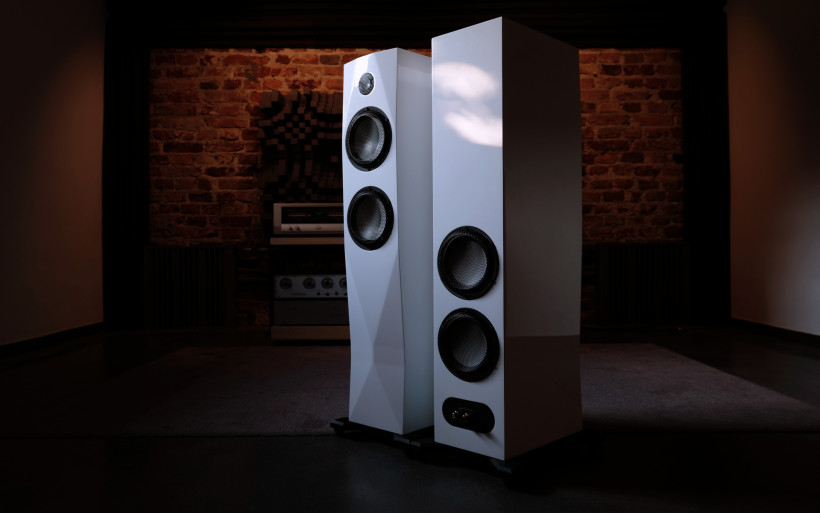 Each DearWolf Roe Deer speaker measures reasonable (HxWxD) 102x20x34cm, though is unapologetically heavy. 50kg mass served in form this compact begs for a lot of elbow grease. This is in large part due to the product’s 25.7mm thick ply/MDF/ply sandwich cabinet’s top, bottom, cheeks and rear, whereas its even gutsier 34mm front is made of ply/MDF. To end up with this exact mixture of enclosure materials and thickness, the local team helped themselves with an accelerometer. The goal was to have a deadly silent box, which would provide optimal working conditions for used woofers. It resonates gently at 620Hz, which is typical for used materials.
Each DearWolf Roe Deer speaker measures reasonable (HxWxD) 102x20x34cm, though is unapologetically heavy. 50kg mass served in form this compact begs for a lot of elbow grease. This is in large part due to the product’s 25.7mm thick ply/MDF/ply sandwich cabinet’s top, bottom, cheeks and rear, whereas its even gutsier 34mm front is made of ply/MDF. To end up with this exact mixture of enclosure materials and thickness, the local team helped themselves with an accelerometer. The goal was to have a deadly silent box, which would provide optimal working conditions for used woofers. It resonates gently at 620Hz, which is typical for used materials. The product’s FR is 38Hz-32kHz, its nominal impedance of 4Ω scores the lowest 3.4Ω dip at 40Hz and efficiency is 87dB. Roe Deer is a three-way product. Accuton’s 30mm tweeter (-3dB@2’300Hz, -9dB@1’150Hz, audible at 480Hz) has its internal chamber modified, this custom-made damping scheme moved its membrane’s own resonance to 610Hz.
The product’s FR is 38Hz-32kHz, its nominal impedance of 4Ω scores the lowest 3.4Ω dip at 40Hz and efficiency is 87dB. Roe Deer is a three-way product. Accuton’s 30mm tweeter (-3dB@2’300Hz, -9dB@1’150Hz, audible at 480Hz) has its internal chamber modified, this custom-made damping scheme moved its membrane’s own resonance to 610Hz.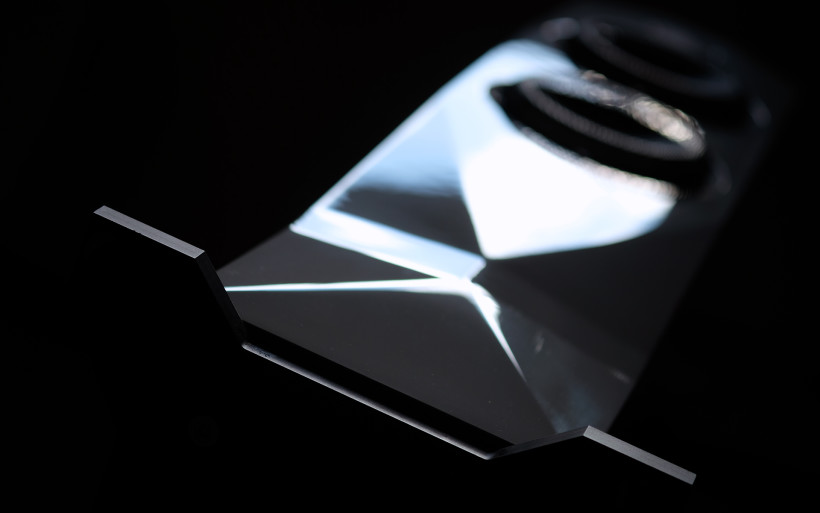 Each speaker’s front houses two Accuton’s entry level 173mm mid-woofers loaded with Al2O3 ceramic membranes. These were cherry-picked due to modest volume demands and also modified to decrease refelctions of their magnetic drives. Interestingly, the transducer just below the tweeter operates in its own chamber. Two passive radiators per floorstander are also made by Accuton and based on aluminium membranes. These woofers are separated from everything else via a 52mm thick internal wall.
Each speaker’s front houses two Accuton’s entry level 173mm mid-woofers loaded with Al2O3 ceramic membranes. These were cherry-picked due to modest volume demands and also modified to decrease refelctions of their magnetic drives. Interestingly, the transducer just below the tweeter operates in its own chamber. Two passive radiators per floorstander are also made by Accuton and based on aluminium membranes. These woofers are separated from everything else via a 52mm thick internal wall.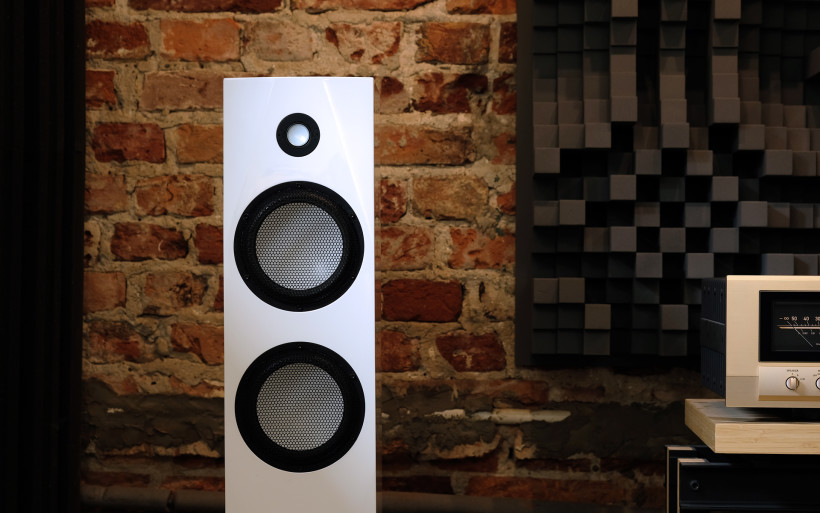 Crossover plot inside of Roe Deer is DearWolf’s own DSC (Dynamic Slope Control). The goal was to have acoustically ideal first order scheme regardless of electric run. To achieve this, almost 40 components were used; Mundorf’s TOTL capacitors (Supreme Evo SilverGold.Oil, Evo SilverGold.Oil and Supreme SilverGold.Oil) and 12AWG coils impregnated in wax to reduce their microphonic effect and increase rigidity. Each enclosure was generously damped with a mixture of Kevlar fibers, felt and acoustic foam.
Crossover plot inside of Roe Deer is DearWolf’s own DSC (Dynamic Slope Control). The goal was to have acoustically ideal first order scheme regardless of electric run. To achieve this, almost 40 components were used; Mundorf’s TOTL capacitors (Supreme Evo SilverGold.Oil, Evo SilverGold.Oil and Supreme SilverGold.Oil) and 12AWG coils impregnated in wax to reduce their microphonic effect and increase rigidity. Each enclosure was generously damped with a mixture of Kevlar fibers, felt and acoustic foam.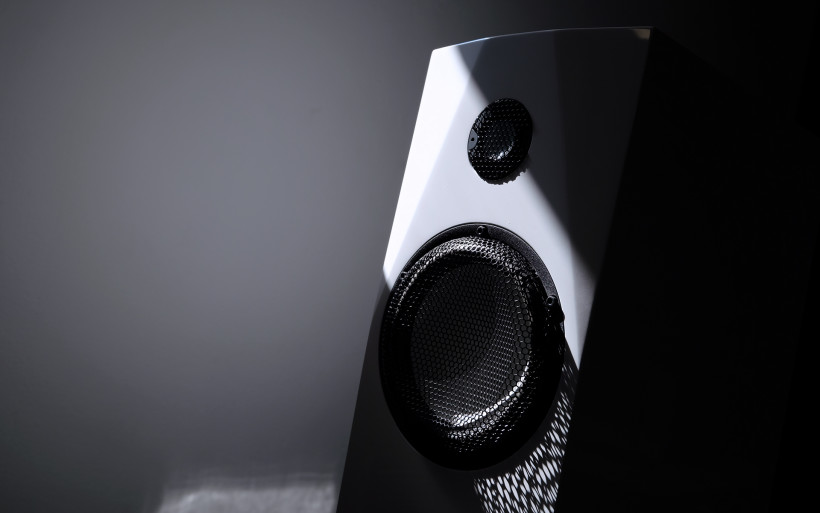 Modified Accuton’s transducers, costly proprietary crossover and generously thick sandwich cabinets indicate rather well that the team DearWolf means some serious business, but we ain’t done yet. Roe Deer’s front got nice trimmings here and there to visually resemble a prism alike structure once lit up. The product’s bases are made of 3cm thick CNC-milled aluminium. These nicely finished items sport four sharply looking supportive legs, meant to be used with large rubbery bullet-shaped feet. I was told that this decoupling and resonance damping method proved to be the best among many other the local team tried. This solution makes each speaker quite wobbly if pushed and rather immovable. I had to secure the ideal positioning of the product in my space prior to attaching its feet, otherwise I’d risk damaging them. And lastly, a large aluminium plate just underneath each floorstander’s twin woofers incorporates WBT’s top shelf 0705Ag binding posts and the same company’s 0718 impact sound interrupters. All in all, I have to say that Roe Deer’s put-togetherness and all materials and parts involved left me quite impressed. It goes without saying that many already well-known audio houses into such luxury don’t go this far.
Modified Accuton’s transducers, costly proprietary crossover and generously thick sandwich cabinets indicate rather well that the team DearWolf means some serious business, but we ain’t done yet. Roe Deer’s front got nice trimmings here and there to visually resemble a prism alike structure once lit up. The product’s bases are made of 3cm thick CNC-milled aluminium. These nicely finished items sport four sharply looking supportive legs, meant to be used with large rubbery bullet-shaped feet. I was told that this decoupling and resonance damping method proved to be the best among many other the local team tried. This solution makes each speaker quite wobbly if pushed and rather immovable. I had to secure the ideal positioning of the product in my space prior to attaching its feet, otherwise I’d risk damaging them. And lastly, a large aluminium plate just underneath each floorstander’s twin woofers incorporates WBT’s top shelf 0705Ag binding posts and the same company’s 0718 impact sound interrupters. All in all, I have to say that Roe Deer’s put-togetherness and all materials and parts involved left me quite impressed. It goes without saying that many already well-known audio houses into such luxury don’t go this far.
Sound
In order to review DearWolf Roe Deer, fidata HFAS-S10U handled storage and transport duties, then LampizatOr Pacific DAC (KR Audio T-100 + KR Audio 5U4G Ltd. Ed.) took over to pass the signal either to Accuphase CP-2150 and P-4500 (swapped with Thöress Dual Function Preamplifier), or Kinki Studio EX-M1 and then to today’s hero or my Boenicke W8. But most importantly, cables took a major role in this review. On the job were items by LessLoss and Audiomica Laboratory. At some point Siltech’s Crown Prince, two Crown Princess sets and two Triple Crown power cords were used as well. iFi audio’s iGalvanic3.0, iUSB3.0, one iPower PSU and three suitable USB leashes found their place in-between my server/transport and DAC. Every component was plugged to the GigaWatt PC-3 SE EVO+ power conditioner married to the in-wall outlet via LC-3 EVO snake by the same manufacturer.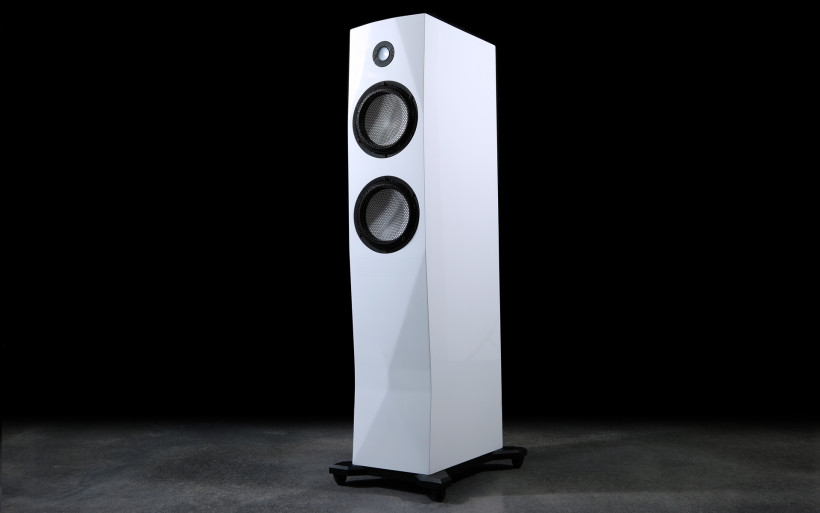 This report’s adventure was many things, but ‘easy’ surely isn’t one of them, Roe Deer proved to be anything but friendly early on. If I had to describe my relation with this product shortly past its arrival, dismay would be the most suitable term I can think of. Hardware which lands under my roof in most cases sounds at least promising from the get-go. Mild tinkering with equipment nearby allows me to gather enough experience, publish my findings and pursue a next assignment, that’s the natural order of things. However, the first day spent with DearWolf’s very first commercial effort left me quite puzzled, the next one invoked frustration and the one after almost pushed me to send the item back.
This report’s adventure was many things, but ‘easy’ surely isn’t one of them, Roe Deer proved to be anything but friendly early on. If I had to describe my relation with this product shortly past its arrival, dismay would be the most suitable term I can think of. Hardware which lands under my roof in most cases sounds at least promising from the get-go. Mild tinkering with equipment nearby allows me to gather enough experience, publish my findings and pursue a next assignment, that’s the natural order of things. However, the first day spent with DearWolf’s very first commercial effort left me quite puzzled, the next one invoked frustration and the one after almost pushed me to send the item back.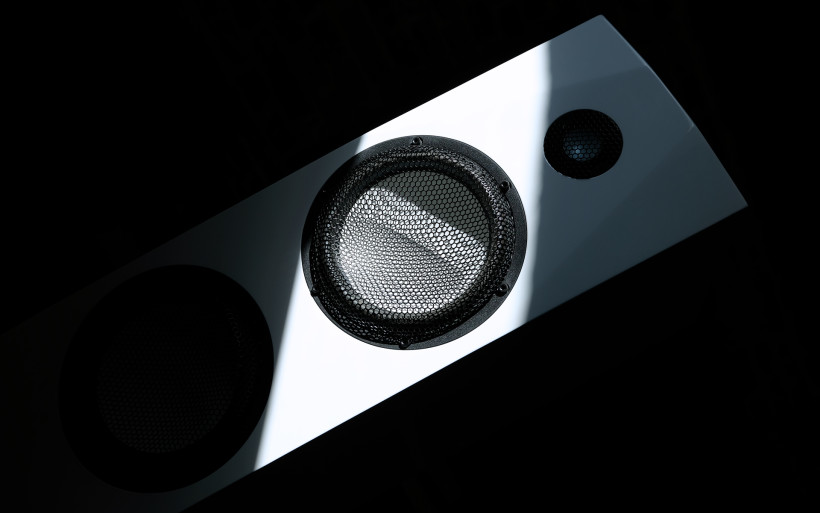 Something similar as described above happened to me only once since this site’s launch three years ago. A single difficult episode which resulted in ‘nay’ among more than one hundred writings published clearly indicates my very low rejection rate. No request for a loaner to be shipped back is sent, unless it’s either damaged or tools to evaluate it properly are missing and there’s no way to have them in timely manner. The demanding Roe Deer seemed to fit the latter description and I almost gave up due to this reason. However, one major discovery was made on the fourth day, several very helpful items arrived shortly after and all this morphed the local performer from utterly bad at my place to truly impressive. It’s high time to explain what actually happened.
Something similar as described above happened to me only once since this site’s launch three years ago. A single difficult episode which resulted in ‘nay’ among more than one hundred writings published clearly indicates my very low rejection rate. No request for a loaner to be shipped back is sent, unless it’s either damaged or tools to evaluate it properly are missing and there’s no way to have them in timely manner. The demanding Roe Deer seemed to fit the latter description and I almost gave up due to this reason. However, one major discovery was made on the fourth day, several very helpful items arrived shortly after and all this morphed the local performer from utterly bad at my place to truly impressive. It’s high time to explain what actually happened.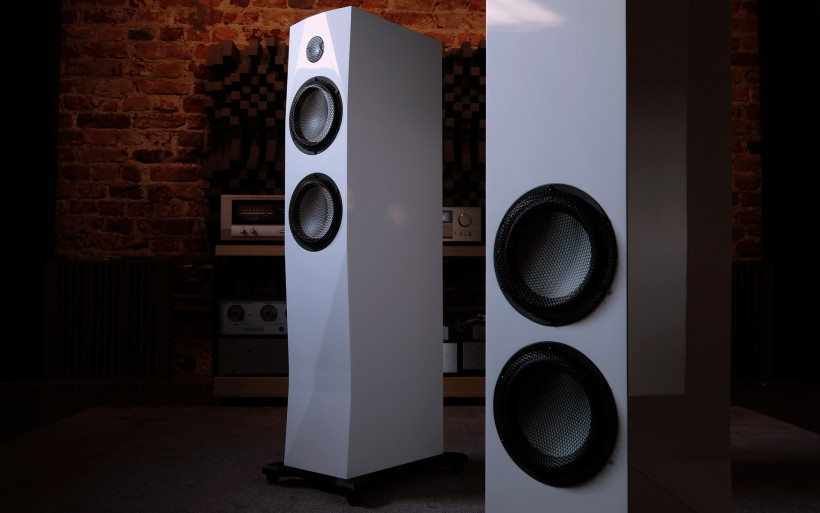 Speakers based on ceramic drivers rightfully earned the reputation of informative, open, agile and airy performers. At times they’re also tonally lightweight, whitish and over-exposed up top, hence shouty. My ears have heard both good and bad examples of this specific sound aesthetic at various audio events; Lumen White’s top of the line married to a stack of Ayon’s machines this year in Munich is filed in my privy book as the one to beat. Since I’m such a good sport, I’ll be silent about razor alike specimens which occupy the other side of the ceramic spectrum. The point is that representatives of this group I’m familiar with, sounded demonstrably unique and also quite alike. No meaty monsters in this flock, far from it, and I’m sure that many people would agree with me on this count. I haven’t yet heard any ceramic specimen within my own four walls, Roe Deer pops my cherry, but evidence collected thus far allowed me to have certain expectations towards today’s product. I wasn’t wrong about this one, it sang just like a proper representative of the sort would.
Speakers based on ceramic drivers rightfully earned the reputation of informative, open, agile and airy performers. At times they’re also tonally lightweight, whitish and over-exposed up top, hence shouty. My ears have heard both good and bad examples of this specific sound aesthetic at various audio events; Lumen White’s top of the line married to a stack of Ayon’s machines this year in Munich is filed in my privy book as the one to beat. Since I’m such a good sport, I’ll be silent about razor alike specimens which occupy the other side of the ceramic spectrum. The point is that representatives of this group I’m familiar with, sounded demonstrably unique and also quite alike. No meaty monsters in this flock, far from it, and I’m sure that many people would agree with me on this count. I haven’t yet heard any ceramic specimen within my own four walls, Roe Deer pops my cherry, but evidence collected thus far allowed me to have certain expectations towards today’s product. I wasn’t wrong about this one, it sang just like a proper representative of the sort would.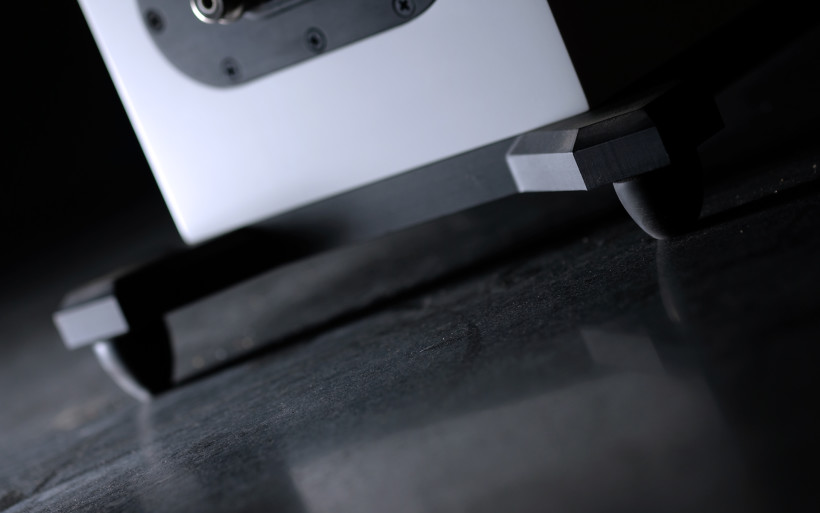 Early on Roe Deer had little in common with the Lumen White heard in Munich, and was nowhere near on quality level. The local speaker set sounded smooth, which I took as a job done already better than most other ceramic products I’ve heard, but that was pretty much it. The result was very ethereal and tonally focused on upper audible FR, its downstairs core wasn’t only truncated but simply not there. The gutsiest cables I had nearby along with the sub-optimal though inherently thick FirstWatt F7 married to Thöress Dual Function Preamplifier didn’t help as well, earthliness injected via these measures was mild at best. Imaging depth was respectable, the effect in large part resembled a typical ceramic act, albeit hollow and far from complete. The gutsy and dynamically potent sensation so vital in large orchestral schemes and a number of other types of music wasn’t there still. Put shortly, the result was priced too steeply to justify the very much monitor alike expense; mid-focused, with explicit though not abnormally shiny top end and no bass whatsoever. This type of performance achievable for far less via a pair of regular monitors begged the question: why to bother with costly floorstanders in the same vein then?
Early on Roe Deer had little in common with the Lumen White heard in Munich, and was nowhere near on quality level. The local speaker set sounded smooth, which I took as a job done already better than most other ceramic products I’ve heard, but that was pretty much it. The result was very ethereal and tonally focused on upper audible FR, its downstairs core wasn’t only truncated but simply not there. The gutsiest cables I had nearby along with the sub-optimal though inherently thick FirstWatt F7 married to Thöress Dual Function Preamplifier didn’t help as well, earthliness injected via these measures was mild at best. Imaging depth was respectable, the effect in large part resembled a typical ceramic act, albeit hollow and far from complete. The gutsy and dynamically potent sensation so vital in large orchestral schemes and a number of other types of music wasn’t there still. Put shortly, the result was priced too steeply to justify the very much monitor alike expense; mid-focused, with explicit though not abnormally shiny top end and no bass whatsoever. This type of performance achievable for far less via a pair of regular monitors begged the question: why to bother with costly floorstanders in the same vein then?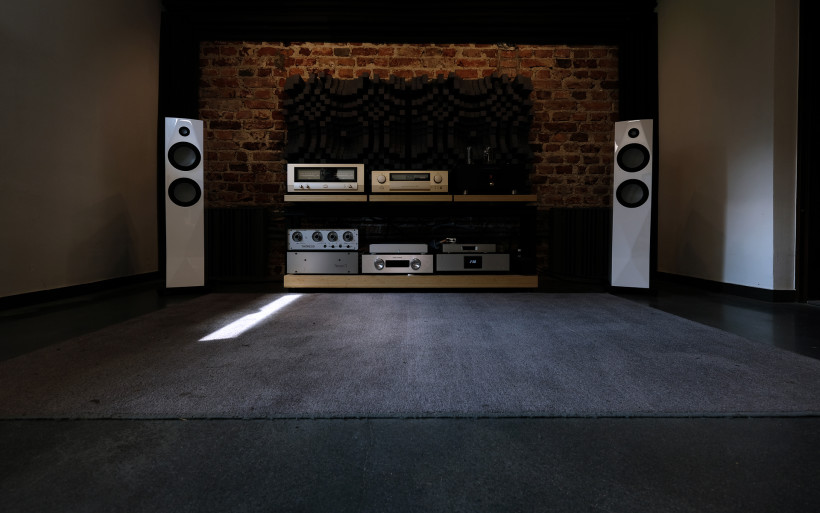 Truth told, for three days I haven’t put too much effort into the Roe Deer case. As per usual, I wanted to familiarize myself with the product in potentially as easygoing fashion as I could; without too much of my attention involved but rather casual and hopefully pleasant ride. No struggle or focus but natural acquaintance via music constantly on in the background is the ideal intake scenario if someone asks me. Over three days in total this didn’t happen however, my frustration grew and I started to wonder about a hidden missing link, whether there was any to begin with. Knowing how demanding ceramic speakers can be, sending the product back was one of options considered at this point. Not having a proper valve workhorse nearby, perhaps I simply wasn’t equipped properly? Perhaps some things weren’t meant to be? And then it struck me.
Truth told, for three days I haven’t put too much effort into the Roe Deer case. As per usual, I wanted to familiarize myself with the product in potentially as easygoing fashion as I could; without too much of my attention involved but rather casual and hopefully pleasant ride. No struggle or focus but natural acquaintance via music constantly on in the background is the ideal intake scenario if someone asks me. Over three days in total this didn’t happen however, my frustration grew and I started to wonder about a hidden missing link, whether there was any to begin with. Knowing how demanding ceramic speakers can be, sending the product back was one of options considered at this point. Not having a proper valve workhorse nearby, perhaps I simply wasn’t equipped properly? Perhaps some things weren’t meant to be? And then it struck me.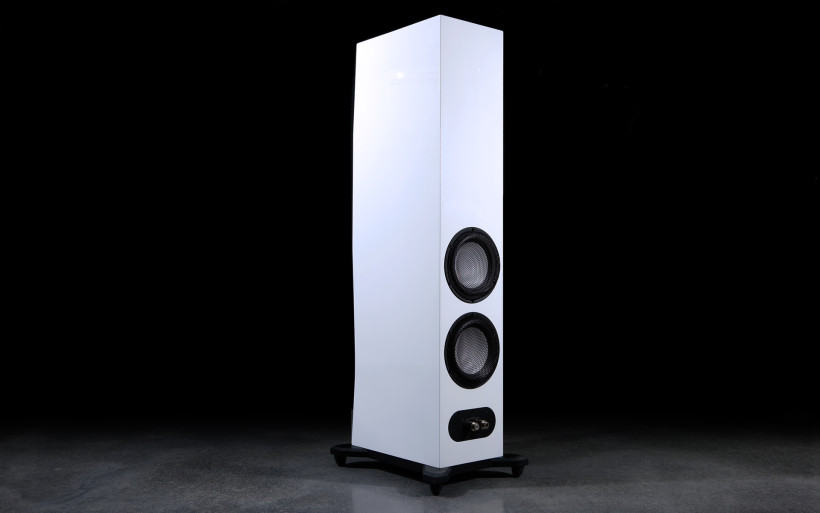 Passive membranes proved to be the answer. My Swiss daily driver needs to land in the middle of my room to spread its spatial grandeur, whereas speakers not loaded with twittering trickery on their rear can easily sit closer to the front wall, which translates to almost every other product, DearWolf’s own included. Such a setup for this one was my starting point and it clearly didn’t work. What did however was significant distance reduction between its passive radiators and flat surface behind. Put shortly, Roe Deer had to be coupled with my brick wall and no more than 60cm space was all it took to have all downstairs presence I needed. The puzzle was solved, yet facing a mirror I saw a freshman who just wasted three days. One thing is that, past i.e. Gradient6.0 experience among several others, I should’ve known better and sooner give the very commonsensical coupling option a go, whereas the local team silent on the subject is the other. Full openness about Roe Deer’s specific demand on this count is my sincere recommendation, lads.
Passive membranes proved to be the answer. My Swiss daily driver needs to land in the middle of my room to spread its spatial grandeur, whereas speakers not loaded with twittering trickery on their rear can easily sit closer to the front wall, which translates to almost every other product, DearWolf’s own included. Such a setup for this one was my starting point and it clearly didn’t work. What did however was significant distance reduction between its passive radiators and flat surface behind. Put shortly, Roe Deer had to be coupled with my brick wall and no more than 60cm space was all it took to have all downstairs presence I needed. The puzzle was solved, yet facing a mirror I saw a freshman who just wasted three days. One thing is that, past i.e. Gradient6.0 experience among several others, I should’ve known better and sooner give the very commonsensical coupling option a go, whereas the local team silent on the subject is the other. Full openness about Roe Deer’s specific demand on this count is my sincere recommendation, lads.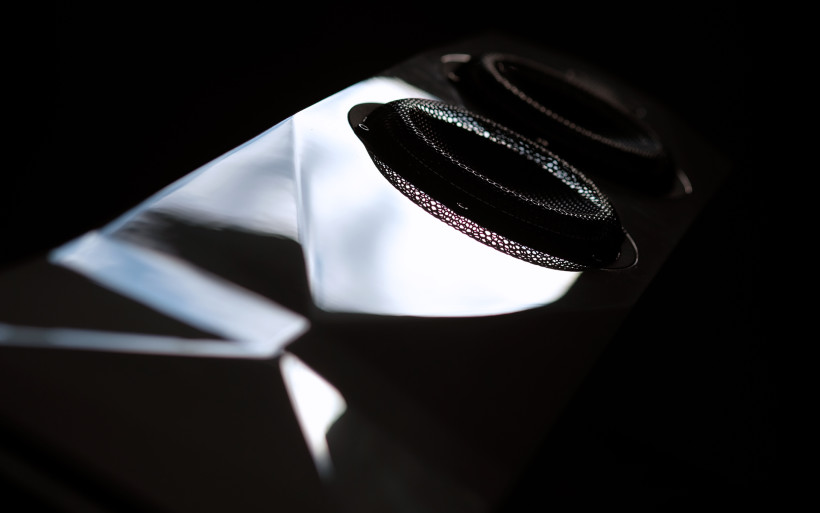 The positioning trick described above worked truly well, the audible bandwidth morphed into something surely worth of further investigation. To be perfectly clear, the passive coupling scheme is not a flaw of today’s hero, but one of its many characteristics and that’s perfectly fine. Vented affairs, closed boxes or free-roaming large dipole woofers, it doesn’t matter. Each solution is viable if used correctly and having said this, the not so commonly seen plot on RoeDeer’s behind I’ve found utmost capable. Not only this product sported bass very agile, fast, snappy and accurate, but also quite thunderous in the low octaves, in general present and higher not abnormally boosted at all. This led to sufficiently gutsy profile free from boom and smear on everything upstairs, which was nothing short of a job really well done. The crackling, vigorous and palpable sensation was additionally sprinkled with generous moisture and complexity, but neither sheer snap nor heft were emphasized. The result like so I’ve found artfully balanced, complete and beyond reach of my daily driver. The Swiss sounded bloomier in comparison, more wobbly and texturally not any better. The Polish team scored a point.
The positioning trick described above worked truly well, the audible bandwidth morphed into something surely worth of further investigation. To be perfectly clear, the passive coupling scheme is not a flaw of today’s hero, but one of its many characteristics and that’s perfectly fine. Vented affairs, closed boxes or free-roaming large dipole woofers, it doesn’t matter. Each solution is viable if used correctly and having said this, the not so commonly seen plot on RoeDeer’s behind I’ve found utmost capable. Not only this product sported bass very agile, fast, snappy and accurate, but also quite thunderous in the low octaves, in general present and higher not abnormally boosted at all. This led to sufficiently gutsy profile free from boom and smear on everything upstairs, which was nothing short of a job really well done. The crackling, vigorous and palpable sensation was additionally sprinkled with generous moisture and complexity, but neither sheer snap nor heft were emphasized. The result like so I’ve found artfully balanced, complete and beyond reach of my daily driver. The Swiss sounded bloomier in comparison, more wobbly and texturally not any better. The Polish team scored a point. DearWolf Roe Deer positively surprised not only as far as its downstairs performance went. The early days with this product already introduced admirable smoothness and this status quo remained throughout the whole time spent with it. As long the Polish animal was fed with quality repertoire, namely music recorded well, it easily portrayed it as beautiful, pleasant and tangible form of art it surely is. Various tracks by Mari Boine, Leonard Cohen and other vocalists delivered nothing less but vivid and truly lifelike experience. Yes, Roe Deer chiseled everything very accurately and precisely just as a proper ceramic affair would, however vocal lines and guitars outlined this explicitly and distinctively substantial at the same time are rarely heard at my place. On top of that came admirably sweet high FR; not sharp, abnormally exposed or hot, not at all. On the contrary, extremely resolving by nature it was also fatigue-free and easygoing, though I tend to think that the local team purposely decided to lower its input in pursue of quality and not quantity. If this was the case I truly can’t tell, but how top end was married to everything below and how it was served, my very ears have found pretty much a spot on.
DearWolf Roe Deer positively surprised not only as far as its downstairs performance went. The early days with this product already introduced admirable smoothness and this status quo remained throughout the whole time spent with it. As long the Polish animal was fed with quality repertoire, namely music recorded well, it easily portrayed it as beautiful, pleasant and tangible form of art it surely is. Various tracks by Mari Boine, Leonard Cohen and other vocalists delivered nothing less but vivid and truly lifelike experience. Yes, Roe Deer chiseled everything very accurately and precisely just as a proper ceramic affair would, however vocal lines and guitars outlined this explicitly and distinctively substantial at the same time are rarely heard at my place. On top of that came admirably sweet high FR; not sharp, abnormally exposed or hot, not at all. On the contrary, extremely resolving by nature it was also fatigue-free and easygoing, though I tend to think that the local team purposely decided to lower its input in pursue of quality and not quantity. If this was the case I truly can’t tell, but how top end was married to everything below and how it was served, my very ears have found pretty much a spot on.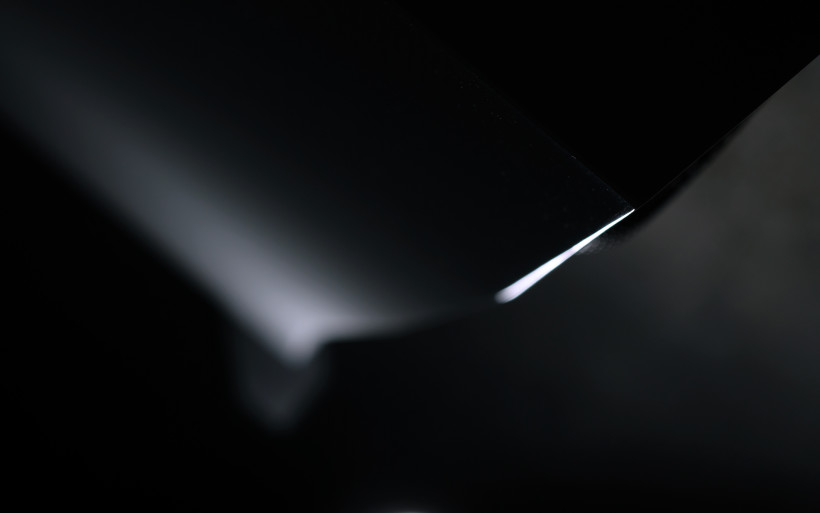 It’s high time to finally admit that Roe Deer doesn’t forgive and has its rather steep list of demands. It is perfectly capable of singing enjoyably as described above, but with suitable high quality companions nearby. Their voicing doesn’t really matter, but refinement and avoidance of garishness does. The truly impressive result at my place was achieved with high fidelity oriented LapizatOr Pacific DAC and the Accuphase team also somewhere along these lines. Heck, power and speaker cables by LessLoss play the very same truth oriented game. The only two machines responsible for upping the ante on saturation and charm were my fidata server/streamer and GigaWatt’s PC-3 SE EVO+ conditioner, and so were two inherently thick Audiomica Laboratory Erys ICs, originally meant to work with widebanders. This I’ve found intriguing to say the least and the more I listened to Roe Deer, the more I understood how finely quality of the setup on duty at my place was showcased. Nothing was hidden, everything mattered. Who knows? Perhaps if I had my density and presence focused Trilogy 925 nearby, or any other muscular deck driven via valves, then the outcome would’ve been even better. This guesswork however doesn’t diminish the result achieved in my cave and with components involved, not even one bit.
It’s high time to finally admit that Roe Deer doesn’t forgive and has its rather steep list of demands. It is perfectly capable of singing enjoyably as described above, but with suitable high quality companions nearby. Their voicing doesn’t really matter, but refinement and avoidance of garishness does. The truly impressive result at my place was achieved with high fidelity oriented LapizatOr Pacific DAC and the Accuphase team also somewhere along these lines. Heck, power and speaker cables by LessLoss play the very same truth oriented game. The only two machines responsible for upping the ante on saturation and charm were my fidata server/streamer and GigaWatt’s PC-3 SE EVO+ conditioner, and so were two inherently thick Audiomica Laboratory Erys ICs, originally meant to work with widebanders. This I’ve found intriguing to say the least and the more I listened to Roe Deer, the more I understood how finely quality of the setup on duty at my place was showcased. Nothing was hidden, everything mattered. Who knows? Perhaps if I had my density and presence focused Trilogy 925 nearby, or any other muscular deck driven via valves, then the outcome would’ve been even better. This guesswork however doesn’t diminish the result achieved in my cave and with components involved, not even one bit.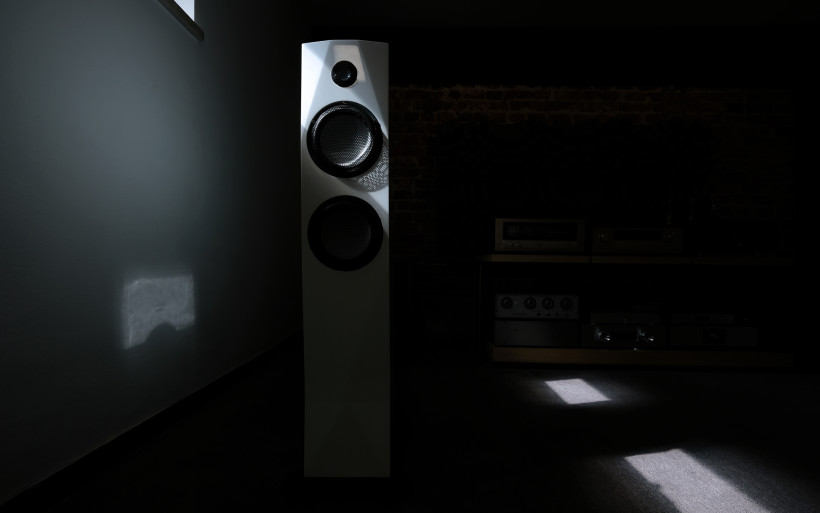 At this point I already had a good taste of what Roe Deer could do; it clearly favoured informational perspective, yet enabled the view in truly civilized and engaging way. The effect was pleasantly open and ethereal where and when it needed to be, but gravity followed along in amount sufficient enough to not be taken as crippled in any way. Although the Polish message was of fully readable and present sort, it was also free from any signs of fatigue with repertoire up to the task, which high fidelity aficionados surely would took as one of RoeDeer’s major upshots.
At this point I already had a good taste of what Roe Deer could do; it clearly favoured informational perspective, yet enabled the view in truly civilized and engaging way. The effect was pleasantly open and ethereal where and when it needed to be, but gravity followed along in amount sufficient enough to not be taken as crippled in any way. Although the Polish message was of fully readable and present sort, it was also free from any signs of fatigue with repertoire up to the task, which high fidelity aficionados surely would took as one of RoeDeer’s major upshots. Let’s now address the elephant in the room. Roe Deer is spatially potent, plainly grand even, yet imaging wise it won’t do it all in vast majority of spaces. Due to its passive radiators best coupled with surface up close, otherwise bass and heft are goners, fairly shallow depth of musical landscape is the heel of this local Achilles. Speakers in desperate need to be figuratively glued to a wall just as today’s product simply have no space to portray multiple layers as generously as i.e. my daily driver usually fixed generous two meters away from my manly cave’s lovely brick face. After extensive triangulations with hardware nearby, no middle ground was found; either up to 75cm distance in-between Roe Deer and wall was maintained, or dire consequences kicked in hard.
Let’s now address the elephant in the room. Roe Deer is spatially potent, plainly grand even, yet imaging wise it won’t do it all in vast majority of spaces. Due to its passive radiators best coupled with surface up close, otherwise bass and heft are goners, fairly shallow depth of musical landscape is the heel of this local Achilles. Speakers in desperate need to be figuratively glued to a wall just as today’s product simply have no space to portray multiple layers as generously as i.e. my daily driver usually fixed generous two meters away from my manly cave’s lovely brick face. After extensive triangulations with hardware nearby, no middle ground was found; either up to 75cm distance in-between Roe Deer and wall was maintained, or dire consequences kicked in hard.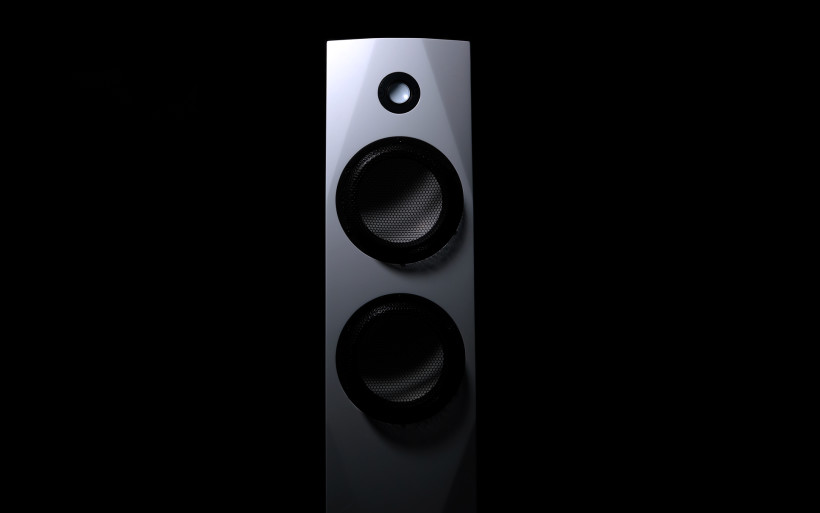 As unlikely as this might sound, a pair of big wide speakers right behind RoeDeer and some two meters of space in front still left would be the ideal placement scenario. One of my local journo colleagues – Jacek of Soundrebels.com – pulled off this stunt exactly. In his large room, DearWolf’s two glossy floorstanders were coupled with not wall but Trenner&Friedl Isis coffins just behind them. The man didn’t have to compromise just as I had to, he got both respectable bass and nicely developed depth at his place. The takeaway is that RoeDeer can score as equally high notes on the two listed counts if the particular placement condition on its list of demands is met. This is unlikely, but possible, that’s what I’m saying.
As unlikely as this might sound, a pair of big wide speakers right behind RoeDeer and some two meters of space in front still left would be the ideal placement scenario. One of my local journo colleagues – Jacek of Soundrebels.com – pulled off this stunt exactly. In his large room, DearWolf’s two glossy floorstanders were coupled with not wall but Trenner&Friedl Isis coffins just behind them. The man didn’t have to compromise just as I had to, he got both respectable bass and nicely developed depth at his place. The takeaway is that RoeDeer can score as equally high notes on the two listed counts if the particular placement condition on its list of demands is met. This is unlikely, but possible, that’s what I’m saying. I have to admit though that uniform and open frame the Roe Deer created at my place was impressively big, open, breathable and very nicely put together. In time I got used to this close and personal here attitude with everything at hand’s reach. Some two weeks into this assignment, the respectable and very pleasant result was achieved, thus I thought that I’m done, all the knowledge was gathered. However, the best was still ahead of me, just recently five costly packages with Siltech labels on them arrived. This changed my view on Roe Deer a lot and surely helped this product.
I have to admit though that uniform and open frame the Roe Deer created at my place was impressively big, open, breathable and very nicely put together. In time I got used to this close and personal here attitude with everything at hand’s reach. Some two weeks into this assignment, the respectable and very pleasant result was achieved, thus I thought that I’m done, all the knowledge was gathered. However, the best was still ahead of me, just recently five costly packages with Siltech labels on them arrived. This changed my view on Roe Deer a lot and surely helped this product.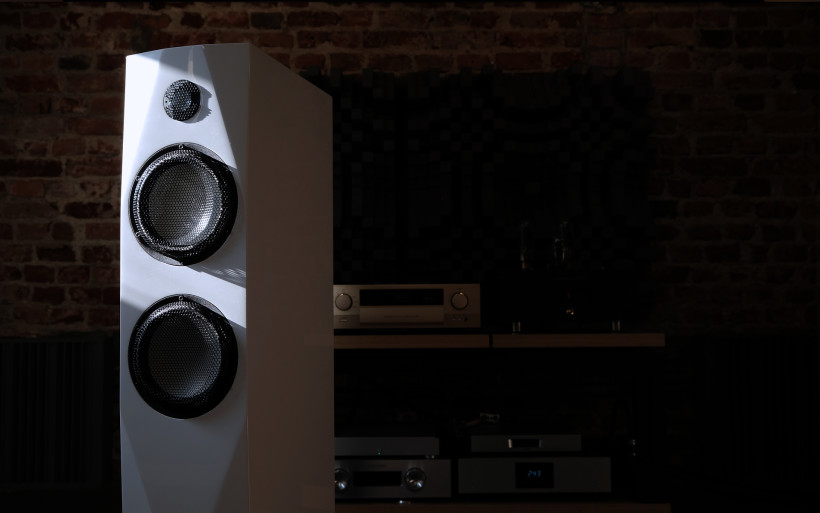 The Accuphase representative here in Poland also happens to be responsible for Siltech. Since the C-2150 and P-4500 loaners were still at my place, the man insisted to marry these two to Edwin Rijnveld’s loom, which I did. The story of its exact input I’ll politely leave for another time, but one thing I’ll say as early as now. These costly cables (roughly €45’000 in total) helped the Roe Deer tremendously; Crown Princess was audible, Crown Prince even more so, but what the two Triple Crown power cords did to the Accuphase hardware was nothing short of bonkers. The wow effect surely was there, and I’m guessing that many people wouldn’t even consider that such a product’s input can be this potent.
The Accuphase representative here in Poland also happens to be responsible for Siltech. Since the C-2150 and P-4500 loaners were still at my place, the man insisted to marry these two to Edwin Rijnveld’s loom, which I did. The story of its exact input I’ll politely leave for another time, but one thing I’ll say as early as now. These costly cables (roughly €45’000 in total) helped the Roe Deer tremendously; Crown Princess was audible, Crown Prince even more so, but what the two Triple Crown power cords did to the Accuphase hardware was nothing short of bonkers. The wow effect surely was there, and I’m guessing that many people wouldn’t even consider that such a product’s input can be this potent.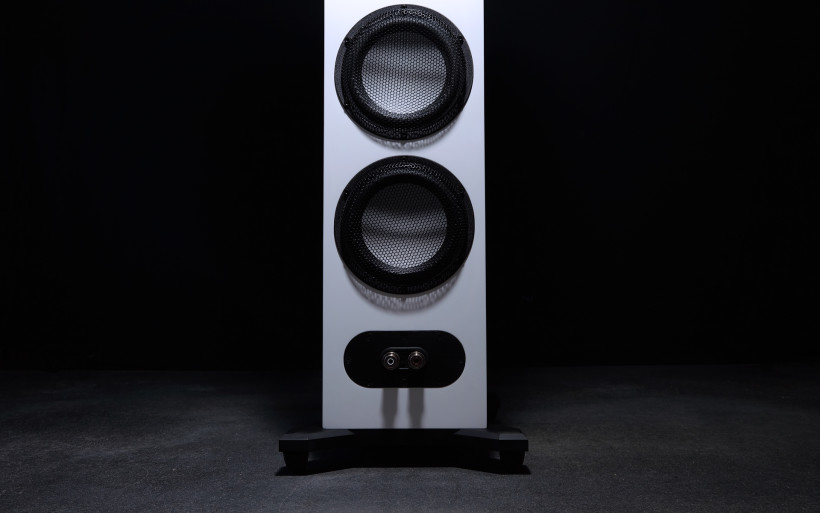 DearWolf Roe Deer in my setup wired with Siltech’s loom sounded bigger, bolder and more open than before, however no major meta shift occurred; no tonal changes or additives were on. It’s safe to say that the local product sounded in more majestic, substantial, even tighter, more insightful, vigorous and now also fully flourished way. Previously I was hesitant with loud auditions heavily based on jumpy repertoire, but with Siltech this was no longer the case. Everything was in perfect check and as enjoyably smooth as ever before regardless of SPL in my room, though imaging depth revealed itself as one of the major beneficiaries of the Dutch treatment. Events previously in one line close to me remained like so, but sheer amount of air around them and how each instrument was portrayed made a tremendous difference in perceiving music as a whole. The change that occurred was nothing short of severe. Inherently informative and present Roe Deer showed more accurately and boldly than my W8 what all cables in the same setup did. The former scaled truly well with each change made, but most importantly in the end it proved to be capable of remarkable things, just as an audio item this costly should.
DearWolf Roe Deer in my setup wired with Siltech’s loom sounded bigger, bolder and more open than before, however no major meta shift occurred; no tonal changes or additives were on. It’s safe to say that the local product sounded in more majestic, substantial, even tighter, more insightful, vigorous and now also fully flourished way. Previously I was hesitant with loud auditions heavily based on jumpy repertoire, but with Siltech this was no longer the case. Everything was in perfect check and as enjoyably smooth as ever before regardless of SPL in my room, though imaging depth revealed itself as one of the major beneficiaries of the Dutch treatment. Events previously in one line close to me remained like so, but sheer amount of air around them and how each instrument was portrayed made a tremendous difference in perceiving music as a whole. The change that occurred was nothing short of severe. Inherently informative and present Roe Deer showed more accurately and boldly than my W8 what all cables in the same setup did. The former scaled truly well with each change made, but most importantly in the end it proved to be capable of remarkable things, just as an audio item this costly should.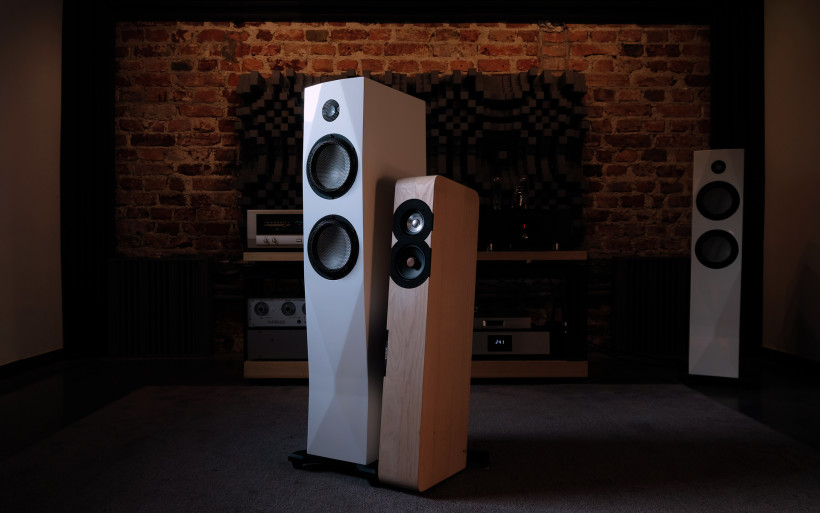 One key component swap was the very last thing on the to-do list at this point. Accuphase C-2150 stepped down and Thöress Dual Function Preamplifier jumped on-board. The former was darker and somewhat closed in comparison, whereas the latter introduced harmonically richer, more tangible and at first glance less substantial though feistier approach. However, one of Reinhard’s DFP machine’s specialties is downstairs crack, energy and elevated sensation of extra amount of air pushed my way, which with the Roe Deer I’ve found very useful. The German deck emphasized the on-stage presence even more to further shorten the distance in-between virtual sound sources and me and made high pitched bits and pieces flying around more visible, which subjectively I enjoyed very much. The setup was now complete and its sound was the one to die for. If early on someone would’ve asked me whether I’ll be this pleased in the end, I’d laugh.
One key component swap was the very last thing on the to-do list at this point. Accuphase C-2150 stepped down and Thöress Dual Function Preamplifier jumped on-board. The former was darker and somewhat closed in comparison, whereas the latter introduced harmonically richer, more tangible and at first glance less substantial though feistier approach. However, one of Reinhard’s DFP machine’s specialties is downstairs crack, energy and elevated sensation of extra amount of air pushed my way, which with the Roe Deer I’ve found very useful. The German deck emphasized the on-stage presence even more to further shorten the distance in-between virtual sound sources and me and made high pitched bits and pieces flying around more visible, which subjectively I enjoyed very much. The setup was now complete and its sound was the one to die for. If early on someone would’ve asked me whether I’ll be this pleased in the end, I’d laugh.
Summary
Krzysztof and Jan surely fixed themselves on a very difficult and ambitious task with their costly first commercial effort. They clearly aim high, intend to take no prisoners and it’s fair to ask about the odds of their operation’s success. Past early days spent with Roe Deer I’d put my money on them going under, however today I know that I would’ve lost. Now I strongly believe that future in front of this product’s makers is bright, if they’ll play it smart.
At first glance DearWolf Roe Deer might look like yet another set of fairly regular speakers, though its top notch fit and finish and no signs of DIY show maturity, whereas costly drivers, crossover components, aluminum bases and WBT terminals help to justify the steep price rather well. Although of not flamboyant or in any way groundbreaking sort, Roe Deer’s visuals I’ve found pleasantly safe, tasteful and appealing, whereas its front composed of several nicely trimmed planes surely ups the ante on this count. R&D is difficult to judge, but sheer weight, nice assembly and general thoughtfulness behind today’s hero deliver enough evidence to think that the local team went more than one extra mile with it. Small startups have to pursue this route in order to stand out of the audio crowd, which the DearWolf team seems to know very well.
DearWolf Roe Deer is demanding and there’s no way around it. As a proper ceramic affair, it greatly benefits from quality components nearby and its passive radiators create a particular positioning request. Either it’s addressed, or things essential in music such as downstairs reach and overall substance are lost. Once all these matters are addressed however, the fun part begins. Today’s item scales remarkably well with associated hardware, on this count it seems to have no end. I truly can’t recall the last time when a product revealed its potency this clearly after each involved component’s swap and its quality increase. It’s safe to assume that I haven’t reached Roe Deer’s limit, but what I was able to achieve with this one at my place was thoroughly impressive and sophisticated. Not only it sported insightful and fully open attitude just as a specimen of its sort should, but also humane element and seasoning beyond most products of the same breed I’m familiar with, which proved me clearly that the DearWolf crew is on the right track. I look forward to what’s next in their pipeline and ‘till next time!
Associated equipment:
- Amplifiers: Kinki Studio EX-M1, FirstWatt F7, Accuphase P-4500
- Sources: LampizatOr Pacific (KR Audio T-100 + KR Audio 5U4G Ltd. Ed.)
- Speakers: Boenicke Audio W8
- Preamplifiers: Accuphase C-2150, Thöress Dual Function Preamplifier
- Transports: fidata HFAS-S10U
- USB: iFi audio iGalvanic3.0, micro iUSB3.0 and 3x Mercury cables
- Speaker cables: Audiomica Laboratory Celes Excellence, LessLoss C-MARC, Siltech Crown Prince
- Interconnects: Audiomica Laboratory Erys Excellence, Siltech Crown Princess
- Power components: Gigawatt PC-3 SE EVO+, Gigawatt PF-2 + Gigawatt LC-2 MK2 + Forza AudioWorks Noir Concept/Audiomica Laboratory Ness Excellence/LessLoss C-MARC/Siltech Triple Crown
- Rack: Franc Audio Accesories Wood Block Rack
- Music: NativeDSD
Retail prices of reviewed components in EU (incl. VAT):
- DearWolf Roe Deer: €15’000
Manufacturer: DearWolf





































